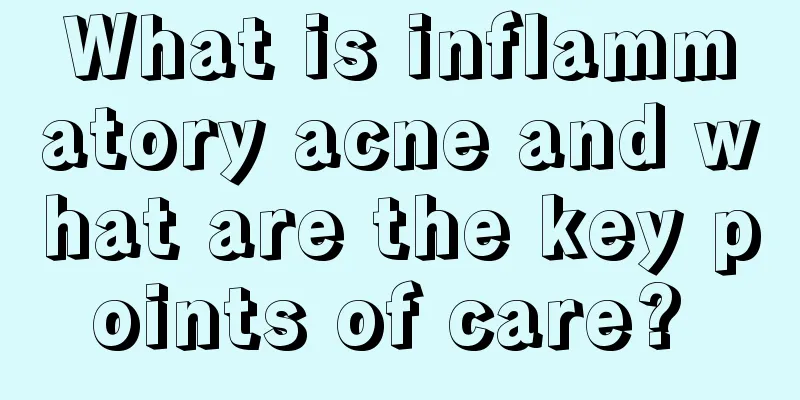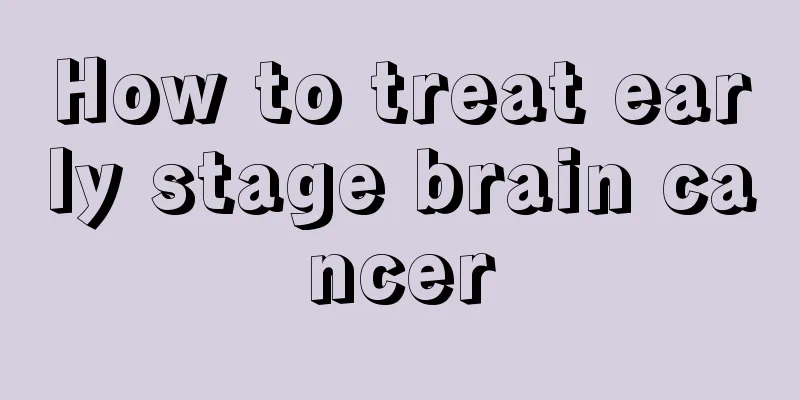What causes numbness in the face?

|
Facial numbness is caused by numbness of the facial nerves, which is what we usually call facial paralysis. Facial paralysis may occur suddenly. When facial paralysis occurs, it often indicates that there may be cerebrovascular disease. There are symptoms of fever before the onset of the disease. Trigeminal nerve degeneration may be infected. If the numbness of the face becomes more and more severe day by day and is accompanied by pain, it may be due to a tumor in the skull or at the base of the skull, or nasopharyngeal cancer and other diseases. Facial paralysis is sometimes not only numbness of the facial nerves, but may also be accompanied by extraoral strabismus, drooling, and slurred speech. Nerve numbness is not a trivial matter, so it is better to go to the hospital for examination as soon as possible. First, sudden onset generally indicates cerebrovascular disease. (1) Transient ischemic attack. Most cases last from a few minutes to a few hours, and fully recover within 24 hours at most. About 1/4 to 1/3 of cases will suffer a cerebral infarction within 2 to 5 years after the onset of symptoms. Antiplatelet aggregation drugs can be taken regularly during treatment: 25 mg of dipyridamole, 3 times a day; 0.15 g of enteric-coated aspirin, once a day; the Chinese medicines Salvia miltiorrhiza and Chuanxiong also have antiplatelet aggregation effects. In addition, patients should drink plenty of water to dilute the blood, which helps prevent transient ischemic attacks. (2) Cerebral thrombosis. In addition to numbness on one side of the face, there is also paralysis of the facial muscles on the same side, that is, the mouth is pulled toward the opposite side, which is more obvious when the teeth are exposed, the corners of the mouth droop, and whistle cannot be whistled. If there is sensory and motor impairment in the upper and lower limbs on the same side, homonymous hemianopsia, that is, triple hemiplegia, the following measures should be taken: ①Dilute the blood. 500ml of low molecular weight dextran or 500-1000ml of 706 generation plasma, intravenous drip, continue for 7-14 days. ② Oral antiplatelet drugs (same as above). ③Relieve cerebral edema. Cerebral thrombosis, local poor blood flow, ischemia and hypoxia, and carbon dioxide retention lead to local vasodilation and increased permeability, and therefore cerebral edema is definitely present. 20% mannitol 250ml can be used for intravenous drip (half an hour to complete), 2 to 4 times a day, generally for 1 week. Second, there is a history of fever before the disease This suggests that infection may cause trigeminal nerve degeneration. Neurotrophic drugs can be used: Vitamin B12 500μg, intramuscular injection, once a day; Vitamin B1 100mg, intramuscular injection, once a day; one course of treatment is 7 to 10 days. Third, facial numbness is getting worse Especially when accompanied by pain, intracranial tumors, skull base tumors, and nasopharyngeal cancer must be considered. CT, MRI, etc. can be used for diagnosis so that early detection and early surgery can be performed. What causes facial numbness? Postpartum facial numbness is divided into four different types, and each type has different symptoms. The following introduces the four different types of postpartum facial numbness and their symptoms. You can refer to the following introduction to see which type of postpartum facial numbness you belong to. Facial numbness is a symptom of facial nerve disease. Facial nerve diseases include facial paralysis, facial nerve paralysis, facial neuritis, hemifacial spasm, hemifacial muscle atrophy, trigeminal neuralgia, etc. They are common and frequently occurring diseases. Therefore, you can go to the hospital for relevant examinations in your current situation, find out the cause and then treat the symptoms. Facial paralysis refers to paralysis of the facial muscles. It is caused by a stroke in the facial nerve, which supplies the facial muscles. The main manifestation is impaired facial muscle movement. The clinical manifestations of facial paralysis are mainly bilateral severe and mild facial muscle paralysis, manifested as inability to frown and frown, inability to close the eyes or incomplete closure, photophobia, tearing and Bell phenomenon. The corner of the mouth is tilted toward the healthier side, air leaks from the more severely affected side when the cheek is puffed out, water leaks from the more severely affected side when the mouth is rinsed, and drooling occurs. When eating, food stays between the teeth and cheeks on the more severely affected side. Unilateral facial paralysis is less common, and its clinical symptoms are similar to those of bilateral facial paralysis, one severe and one mild. Traditional Chinese medicine calls it crooked mouth and slanted eyes, commonly known as hanging line wind and aiming wind (just like a carpenter hanging a line and a soldier aiming). If peripheral facial nerve paralysis occurs to the same degree on both sides, the person will have a blank expression on his face, will not smile, his eyes and lips cannot close tightly, food will remain in his cheeks when eating, and his speech will be slurred. Traditional Chinese medicine calls it total paralysis, commonly known as vegetative paralysis or stupid paralysis. These three types of peripheral facial paralysis have an acute onset and are mostly discovered when washing in the morning or talking with others. They can occur at any age. Especially for unilateral and bilateral one severe and one mild type, the severity of the disease may change during the course of the disease; or the muscles on the primary affected side may have atrophied and the healthier side may begin to become paralyzed. This is why it is common for a quarrel to first tilt to one side and then to the other side. In addition, there is chronic external stroke, which does not belong to peripheral facial paralysis. The facial muscles are not paralyzed, the mouth is not crooked, and the eyes are not slanted. It manifests as headache, tightness of the head, pain behind the ears, tightness behind the ears, neck pain, shoulder pain, back pain, waist pain, leg pain, cold feet and hands, cold back, half of the body is cold, half of the body is tight, cold face, facial pain, tight face, facial numbness, facial itching, facial twitching, facial spasm, fear of cold, fear of wind and other discomforts. It also belongs to the category of external stroke and is much easier to treat than acute facial paralysis. However, if it is not treated properly, it will last for many years or lead to chronic peripheral facial nerve paralysis. |
<<: What to do if the shoes have odor and can't be removed
>>: How to get rid of the strong odor in private parts?
Recommend
What to do if you are constipated and always fart?
White-collar workers who always sit in front of c...
What will happen if bladder cancer is not removed at the age of 76
If bladder cancer is not removed at the age of 76...
What symptoms may be late-stage prostate cancer? Does prostate cancer require surgical removal?
The prostate is a very important organ for men. I...
How to cut potatoes into French fries
Everyone is familiar with potatoes. Many people l...
What are some folk remedies for treating bad breath?
There are actually many methods and techniques fo...
How to prevent lung cancer? Five tips to keep you away from lung cancer
In recent years, more and more people have died f...
What kind of grapes are best for making wine
China's wine culture has a long history of th...
What is acetylglucosaminidase
Acetyl glucosaminidase is a sensitive marker for ...
What disease is related to throat bleeding
Throat bleeding is very common in daily life. It ...
Eliminate acne
We all hate acne. The chance of getting acne is v...
What is anterior wall myocardial infarction
Myocardial infarction is a relatively serious dis...
6 auxiliary diagnostic methods for colorectal cancer
The commonly used auxiliary diagnostic methods fo...
Can watermelon rind remove acne?
A clean face is beautiful, but a face full of pim...
How to erase oil-based markers?
People often use oil pens in their daily lives. O...
What are the functions and effects of talc?
Talc is a mineral. Talc is the softest mineral cu...









